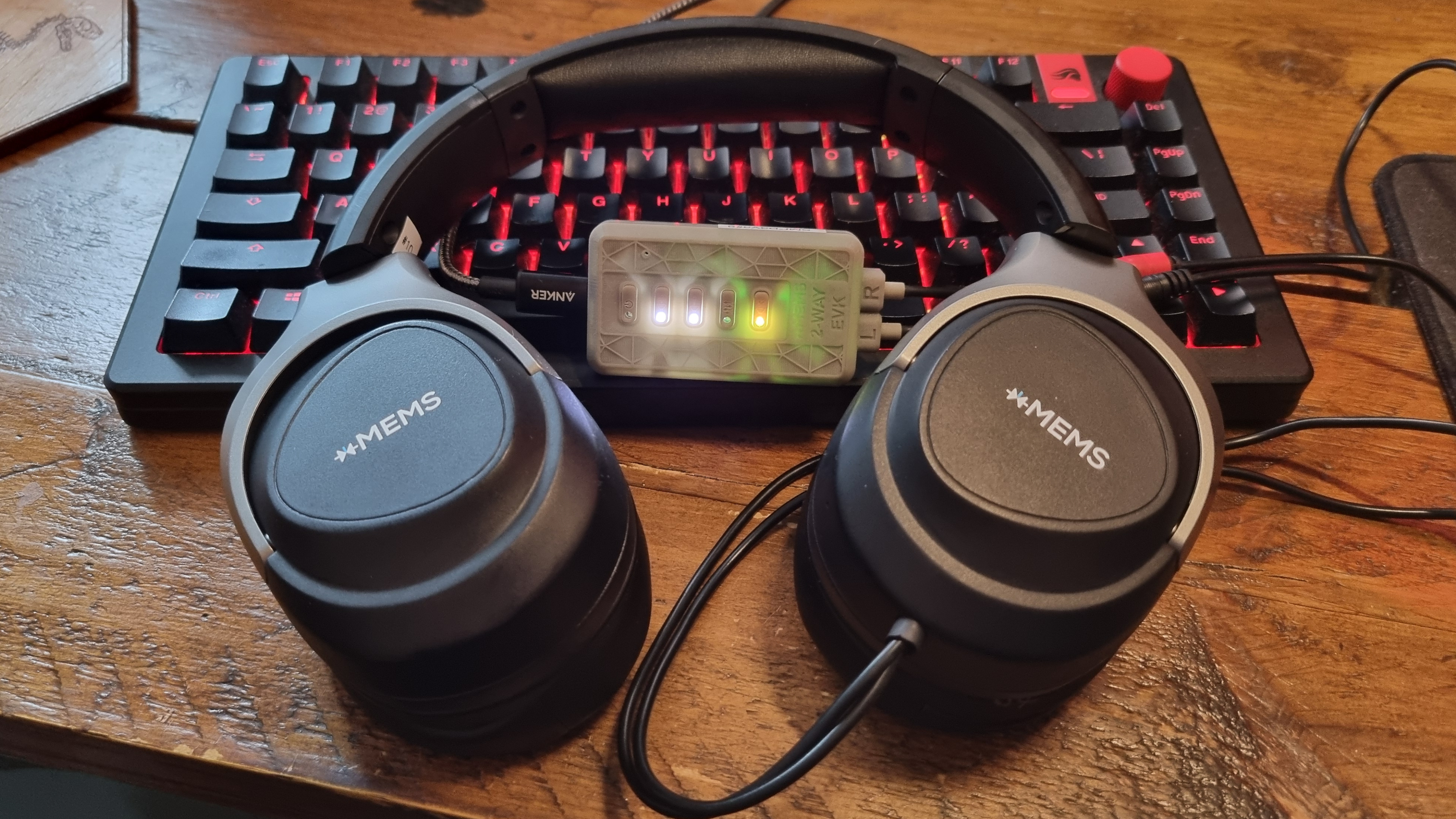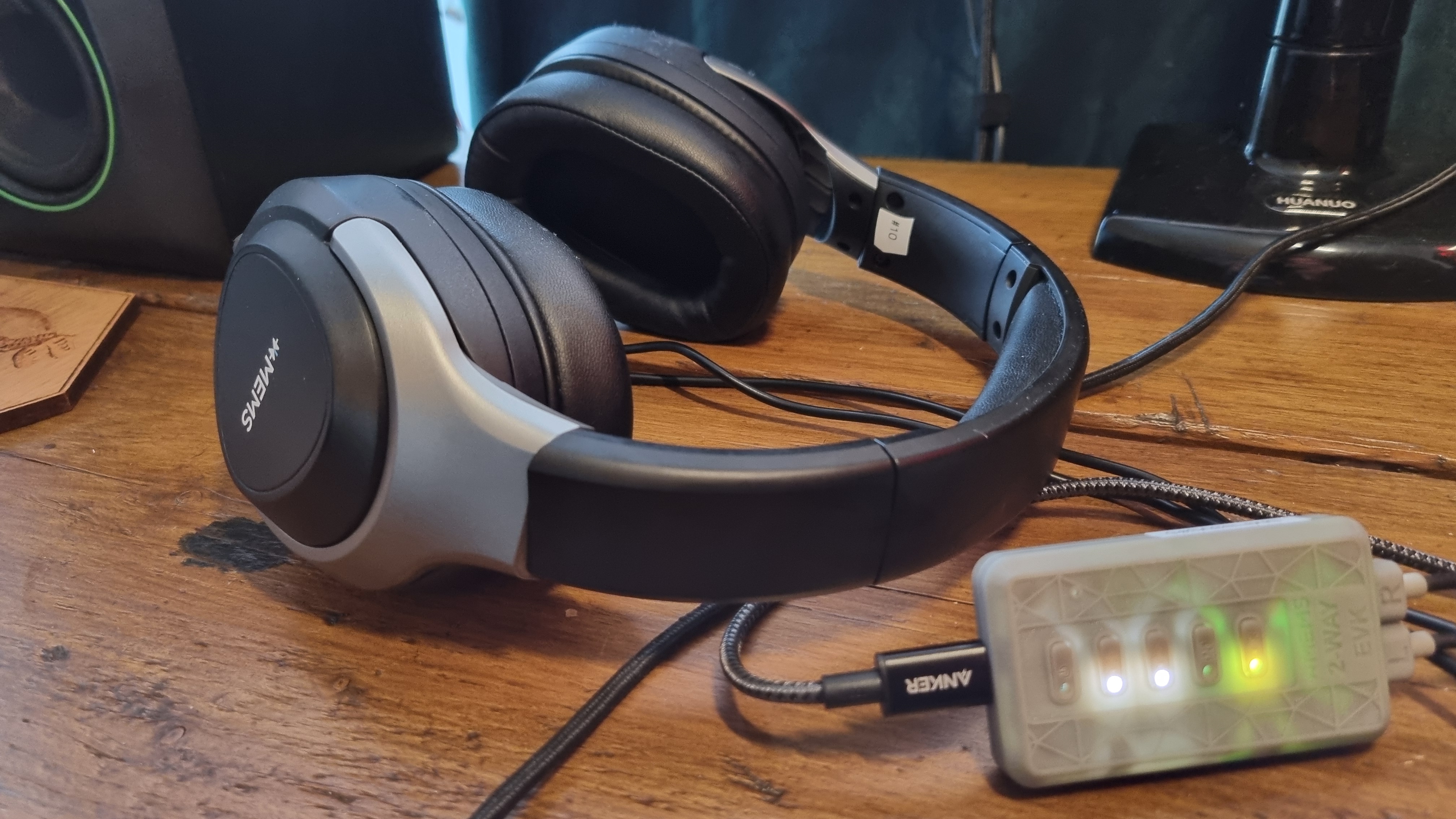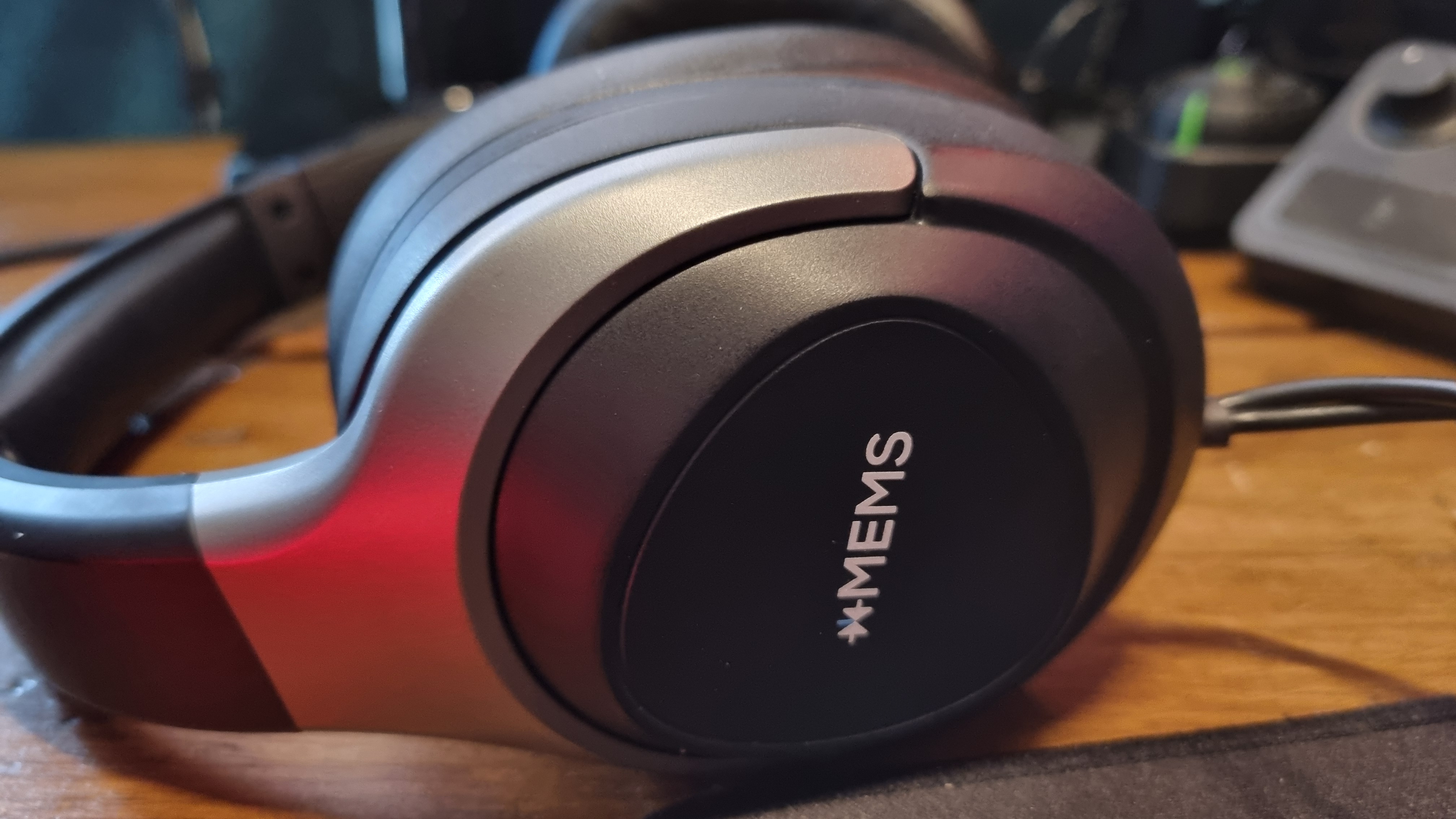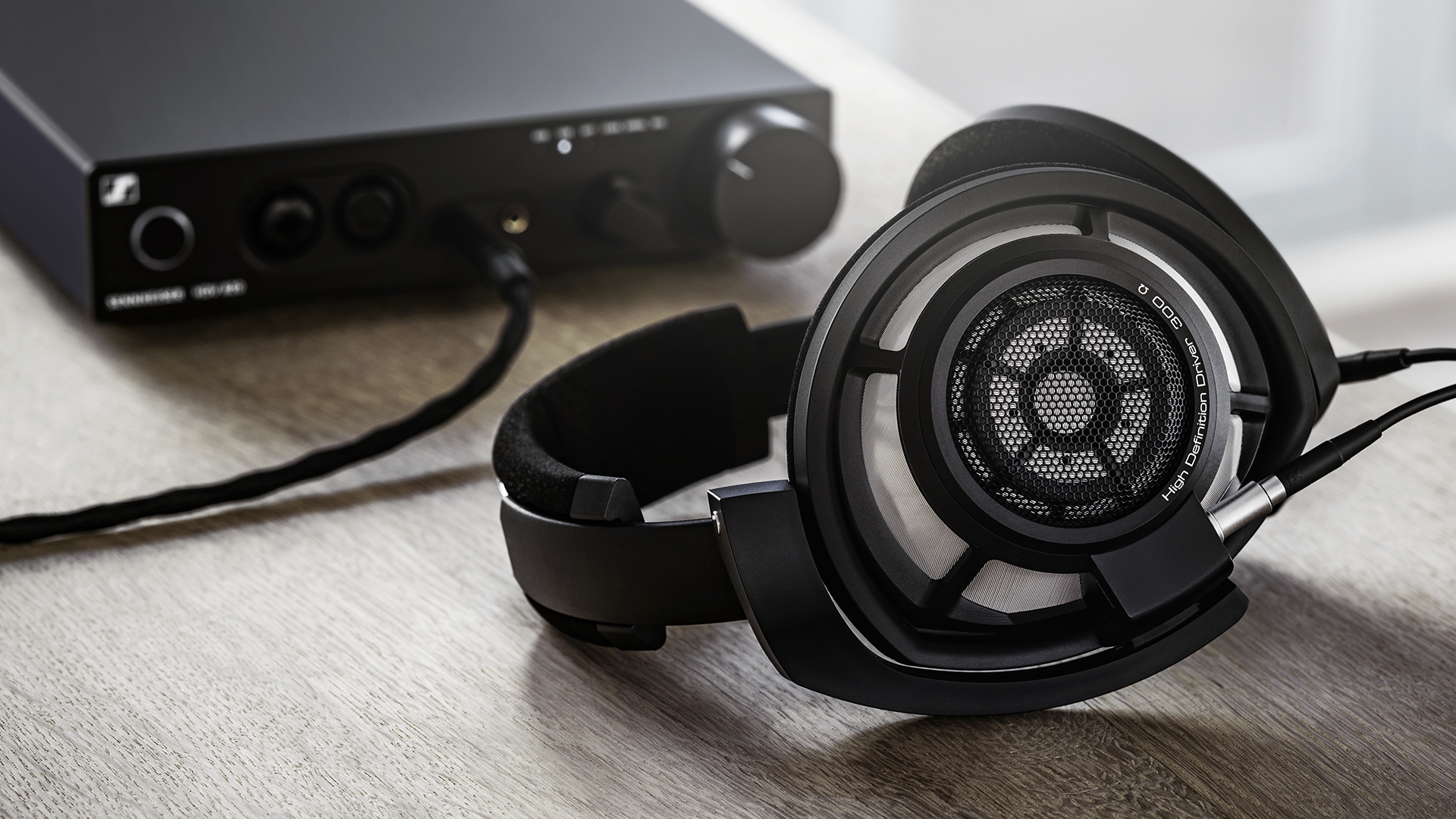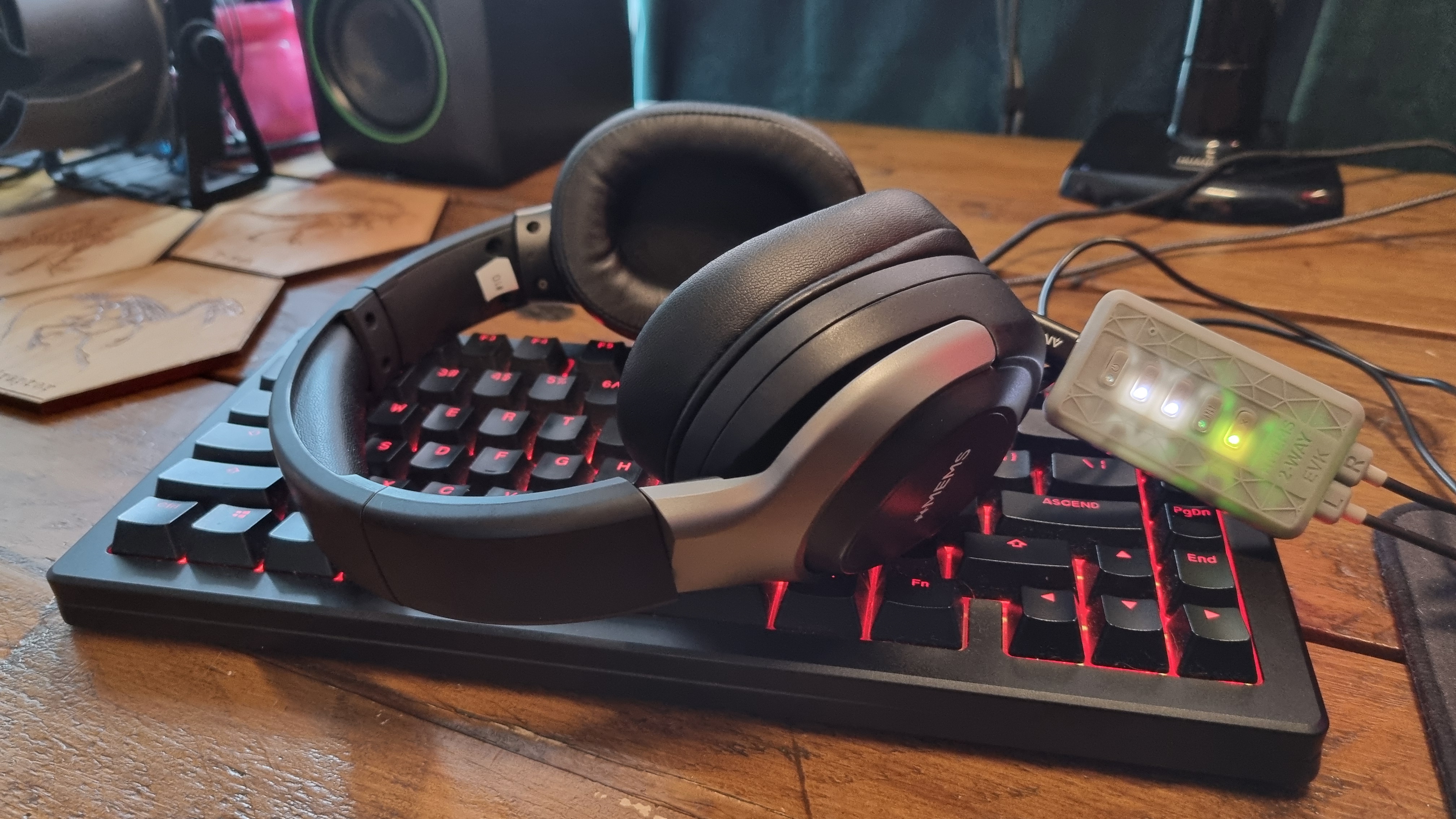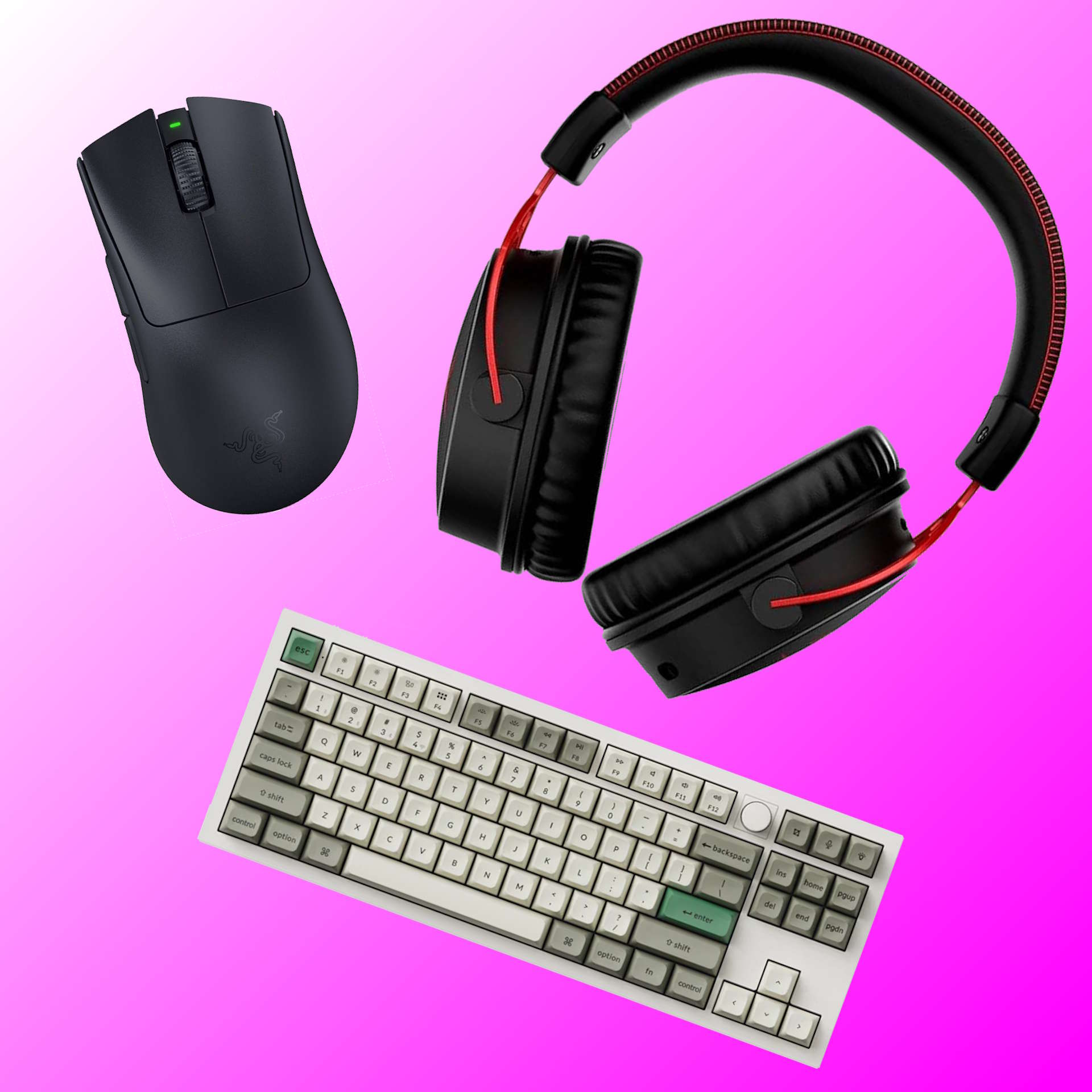
Competitive gamers should pay attention to these speedy little beasties.
You’d be forgiven for thinking that gaming headset audio has reached something of a standstill. After all, tear apart most models and you’ll find a pair of traditional do-it-all drivers, which are essentially two small speakers pointed directly at your lugholes. Expensive planar magnetic units (like those used in the magnificent Audeze Maxwell) are the hot thing, but other than that it’s mostly been variations on that one particular theme.
However, I’ve been testing a prototype gaming headset that makes use of tiny solid-state speakers in conjunction with regular drivers, with the aim of providing more responsive audio than traditional sets for a significantly lower cost—and it’s been something of a revelation for multiplayer gaming.
The prototype set has been put together by xMEMS Labs, in collaboration with Ampacs, a consumer electronics manufacturer. The former has been developing a patented two-way module architecture for gaming headsets that makes use of the xMEMS Cowell, which it describes as “the world’s smallest full-range, all-silicon MEMS speaker.”
Unlike conventional, magnet-driven drivers, solid-state MEMS (Micro Electro Mechanical Systems) speakers use an integrated thin-film piezoelectric actuator to vibrate a silicon surface, resulting in higher frequency response than traditional drivers and what many perceive to be a “cleaner”, more linear sonic response.
Cramming miniature ones into a gaming headset alongside a regular driver is a novel use of the tech—essentially using the Cowell MEMS micro speaker as a miniature tweeter for high and mid-range audio, while the conventional, Ampacs-provided unit handles the low-end.
The micro-speaker itself is printed on a single piece of silicon, which xMEMS Labs says keeps costs down for headset manufacturers in comparison to the exotic materials often used in conventional headset drivers, like graphene, carbon fiber, or titanium. They’re also said to be easier for manufacturers to tune, reducing time to market by speeding up the development process.
For us gamers, though, xMEMS says that because the silicon micro-speaker focuses on upper-to-mid-range frequencies only, you get cleaner spatial imaging, faster response times, and more detail from the higher end of the frequency spectrum compared to a regular gaming headset.
All very good on paper, but I wanted to test them for myself. The headset that xMEMS provided me is very much a work in progress, as evidenced by the two cables sticking out of the bottom of the left earcup and a “this’ll do for now” plastic control box attached halfway down the signal chain.
However, jumping into a session of my current multiplayer obsession, Gray Zone Warfare, reveals a headset that sounds like it’s nearly ready for primetime.
In a tactical shooter like GZW, footstep-listening is key. Recent updates have improved the game’s audio system, resulting in better spatial positioning, wider soundstages, and some seriously tense, seriously atmospheric sonic moments.
Buzzing insects, gunshots echoing in the distance, a grubby sneaker splashing in a nearby puddle—all of this matters when you’re trying to survive in the dense jungles and cobbled-together shanty towns of Lamang.
The xMEMS headset navigates this sonic soup with aplomb. I was initially concerned there would be an obvious gap between the lower frequencies provided by the conventional driver, and the mid-range to treble provided by the separate miniature MEMS units. However, in my gaming testing I’ve found the two to sing together quite happily.
Not only that, but the micro-speaker/driver combo feels slightly faster to respond than a conventional headset, which has me jumping at incidental noises and peeking around corners far more often than I’m used to.
The sheer clarity of the treble is also something of a revelation for pinpointing gunshots and identifying chatter over the maelstrom of battle—although it’s still my reaction times letting the side down, not the responsiveness of the speakers themselves.
Our impulse response is basically up and down, so when you put a signal through it, there’s no attack time, there’s no release.
Pierce Hening, xMEMS acoustic lead engineer
I had the opportunity to chat to Pierce Hening, xMEM’s lead acoustic engineer, about the project and he confirmed that response time is a key benefit of the speaker-combo tech:
“Our drivers are incredibly fast. Our impulse response is basically up and down, so when you put a signal through it, there’s no attack time, there’s no release.”
“With pretty much every dynamic driver that’s in any gaming or regular headset, there’s some form of delay, as well as an attack time and a release time, whereas we’re just up and down with the signal. And it allows us to be very fast and reproduce audio incredibly accurately.”
While the design is still in the prototype phase, Pierce and his team have been conducting small sample size testing that seems to have yielded promising results, especially when compared to some of the bigger headset manufacturers on the market:
“We performed [a test] on these versus a plethora of other headsets, and we found that what we see objectively does correlate to the subjective realm. People did feel like the sources were tighter around them, and they felt like they were able to pinpoint where their sources were on a sphere around them outside of a field of view.
“[We found] our headphones perform better than $100, $200, $300 sets of headphones, and were comparable to a $500 pair of planar magnetics and a $1,600 set of Sennheiser HD800s.”
While that might be the case for gaming, when it comes to other media I’d say the xMEMS set does a good job, rather than outstanding. I’ve had the pleasure of testing several planar magnetic headsets (and the odd high-end set from Sennheiser) and while the xMEMS are perfectly serviceable for day-to-day use, I’d say that for music listening and movie-watching, I’d still take a set of planar magnetics over these.
…if gamers could pick up a set of these for budget-to-mid-range money, I reckon xMEMS really might be on to something.
To me, they can sometimes sound slightly harsh when reproducing certain mid-range frequencies, which lends a perceptibly thin quality to some mid-range-focussed mixes. Still, it’s far from what I’d describe as bad audio—and something I reckon is easy enough to justify given the positional benefits for gaming.
However, that’s the issue all audio equipment manufacturers must face—sound is a very subjective thing, and my read on it may not be the same as others.
And given that one of the key benefits of the tech is said to be keeping costs low at the production line, I could absolutely see the tech being adopted for speedy, well-priced, esports-focussed gaming headsets.
I’m aware of many Escape From Tarkov players, for example, that use the crunchiest of EQ settings to gain an advantage over the competition. Response times, positional audio, and clarity matter more than anything else at the top end of competitive gaming, and I reckon they’d be very happy with a set of these.
And all for a reasonable price? That’s very intriguing. High-end gaming headsets can be painfully expensive, so if gamers could pick up a set of these for budget-to-mid-range money, I reckon xMEMS really might be on to something.
I asked if the company had any major partners in the works, and was told with steely-eyed confidence that most major brands were now aware of xMEMS tech, and some are already working towards products for the mass-market.
So, perhaps it won’t be long until we see xMEMS micro-speakers appearing in modestly-priced, yet audibly-excellent gaming sets. And while I’m happy to see progress in this arena, I can’t help shake the feeling it’ll simply be another boon for the skill-blessed gamer, and another reason to feel ashamed of my embarrassingly low kill-death ratio.
There’s no substitute for talent combined with vast amounts of practice, I guess. Still, for my next GZW session (and while I’m one of the very few to get their hands on a pair), I’ll be strapping the xMEMS headset back on my oversized bonce. Let’s face it—when it comes to gaining an advantage, I’ll take all the help I can get.
Best gaming mouse: the top rodents for gaming
Best gaming keyboard: your PC’s best friend…
Best gaming headset: don’t ignore in-game audio

